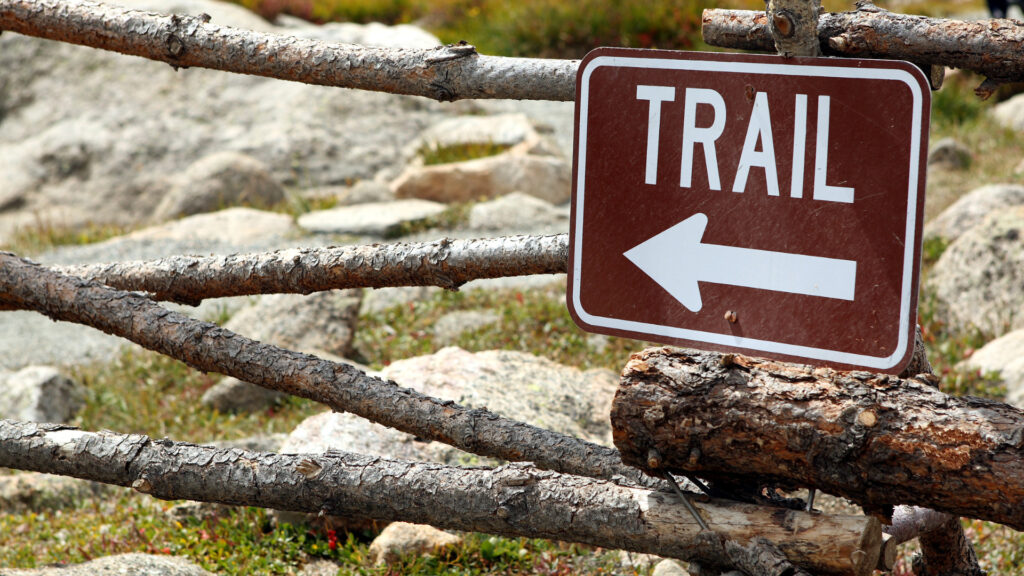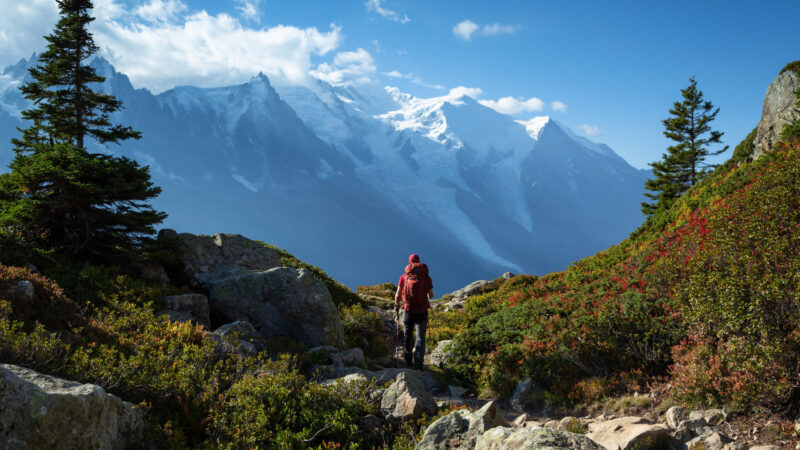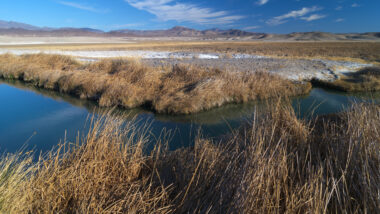Table of Contents Show
Spending time outdoors can be a breathtaking and rejuvenating experience to escape from the daily grind. However, hiking safety means remembering that nature can be unforgiving and deadly.
Every year, hikers and adventurers enter the wilderness unprepared and ill-equipped. Tragically, not all of them return. To avoid being one of them, you must take safety seriously while hiking.
From sudden weather changes to unexpected wildlife encounters, the risks of hiking are real, and you can’t afford to take them lightly.
Today, we’ll share some tips to help you stay safe while hiking and spending time outdoors.
Is Hiking a High-Risk Activity?
Like any outdoor activity, hiking carries some inherent risks that you should not overlook. However, hiking can be a safe and enjoyable experience if you take the time to prepare, educate yourself, and exercise caution.
Risks typically associated with hiking include severe weather conditions, challenging terrain, getting lost, dangerous wildlife, and injuries from falls or other accidents.
While mitigating and avoiding many risks is possible, outdoor adventures can be unpredictable.
Some hikes and wilderness areas are riskier than others and present their own challenges. To maximize your safety, you must educate yourself on the dangers specific to where you want to hike. Prepare yourself physically and mentally for whatever challenges you might face.

When Should You Not Go Hiking?
No matter how epic of a hike you have planned, there are some times when you should avoid hiking. The most obvious time to avoid hiking is during severe weather conditions.
This includes thunderstorms, heavy rain, or other severe weather conditions. You drastically increase the risks of hypothermia, getting lost, and getting injured.
Additionally, you should think twice about hiking if you have a health situation. Hitting the trails could exacerbate an illness or medical condition. This would put you further away from any medical professionals should your condition worsen.
You should also avoid hiking during trail closures. Officials often close trails due to maintenance or hazardous conditions.
Fallen trees, dangerous sinkholes, or aggressive wildlife could be in the area and the cause of the closure. Do yourself a favor and respect the closure. This may mean choosing a different trail or waiting until it reopens.
What Should You Do Before Hiking?
Whether you’re new to hiking or you’ve been doing it for years, there are some things you should always do before hiking.
The longer you hike, the more these will become second nature. However, novices may consider creating a checklist to prepare appropriately for the adventure.
First, check the trail and familiarize yourself with the route you plan to hike. Note the length, elevation gains, and any potential hazards.
During this stage, evaluate your physical abilities thoroughly. If you’re new to hiking, it might not be best to set out for 20+ miles or to climb thousands of feet in elevation.
Don’t forget to check the weather forecast where you’ll be hiking. This will help you determine what clothes to wear, what gear to bring, and whether you can safely hike.
Remember that weather can change with little notice, especially at higher elevations. A chance of rain can quickly turn into monsoon-like conditions.
You should also always let others know your plans before hitting the trail. Tell them where you plan to go, your route, and when you expect to return. This can be helpful information if, for some reason, you fail to return on schedule.
They can relay the information to the proper authorities to begin their search should anything happen.
What Should You Pack for Hiking?
One of the keys to hiking safety is packing the right gear and equipment. Unfortunately, there’s no one-size-fits-all packing list for every hiking adventure. However, you’ll need a handful of items to have with you when on a trail.
First, ensure you have a sturdy and comfortable backpack. It must be large enough to carry the gear, food, and water you’ll need during your trip. You don’t want to do without because you don’t have enough space.
- High-Quality Material:Hiking backpack is made of high quality rip-stop 210d nylon fabric,which is water resistant,tear...
- Ergonomic and Comfortable Design:Thicker padded back with ergonomic breathable design paired with adjustable, breathable...
Next, you must carry the necessities, including food and water, in your backpack. Your snacks and food will be your energy source while hiking, so make sure you pack plenty.
If you want to lighten your load, a portable filtration system can allow you to carry less water if you have fresh water sources nearby.
Don’t forget other essential supplies like a navigation tool, first-aid kit, and emergency supplies. The specific gear and supplies you’ll need will significantly depend on the length and difficulty of the trail, weather conditions, and your personal needs.
Keep in Mind: Stay energized during your hike with these Delicious Hiking Snacks!
Hiking Safety Tips That Could Save Your Life
Safety should always be your top priority when hiking. We’ve compiled a list of hiking safety tips that could save your life. Lace up your hiking boots, and let’s dive in!
Plan Ahead
There’s a reason why the Boy Scout motto is “Be prepared.” Staying safe while hiking requires having a plan and communicating it with others.
Creating a plan requires you to research and inform yourself about the adventure before you. This can help you consider the possible risks and challenges you might face.
Bring the Appropriate Gear
A well-formulated plan enables you to bring the appropriate gear during your hike. What you’ll need for hiking in the mountains of Tennessee varies from what you’ll need when hiking down into the Grand Canyon.
You must bring the appropriate gear to help you stay safe no matter where your adventures take you.

Know Your Limits
Even if you have all the right gear and plan accordingly, you can’t afford to overestimate your limits. Your safety while hiking can come down to knowing your own body.
Some adventures require you to prepare yourself physically by training. This could mean weeks or months of intense preparations depending on the trip.
You can’t expect to go from being a couch potato to attempting to hike the entire Appalachian Trail without training. Know your limits and avoid biting off more than you can chew. If not, you could find yourself in over your head and in a dangerous situation.
Stay on Marked Trails
While some trails are marked better than others, one of the easiest ways to get lost is to wander off a marked trail. Look for markings along the trail that point you in the right direction. Using the AllTrails app on your phone can help you stay on the path when unsure where to go.
However, don’t rely too heavily on technology. As you likely know, it’s bound to let you down when you need it most, especially in remote wilderness areas.
If possible, carry a paper map of the trail or the area. Having a compass and knowing how to use it can help you find your way on a poorly marked trail.

Be Aware of Your Surroundings
Like a crowded city street, the wilderness can be unpredictable and dangerous. You must always remain aware of your surroundings. Be mindful of potential dangers to avoid them at all costs. This includes changes in the trail or wildlife living in the area.
Take the opportunity to disconnect from technology to be completely aware of your surroundings. Understand that hiking safety also includes watching and listening for unexpected dangers.
While you may have curated the perfect playlist to serve as the soundtrack for your hike, it can cause you to miss important signals that could save your life.
Whether it’s the rattle of a rattlesnake’s tail or the grunts from a momma bear, you want to hear them as soon as possible. You might be one step away from making a life-threatening decision. So pay attention to your surroundings and use your senses to your advantage.
Never Hike Alone
Another major mistake many hikers make is hitting the trail alone. This is dangerous because if you fall or get injured, you won’t have anyone to call for help. You’ll be entirely alone to care for yourself and get out of dicey situations.
Additionally, hiking with others allows you to bring more gear and share the weight of the load. If you go on a long and grueling hike, you’ll appreciate the morale boost a hiking partner can have.
However, you can still bring a personal locator beacon or satellite communication device if you get separated or lost and share the information with others.
Know Basic First Aid
Having a basic first-aid kit in your backpack won’t do you any good if you don’t know how to use it.
To maximize your safety while hiking, consider taking a basic first-aid course to freshen up your skills. Knowing how to treat and dress wounds can help you avoid infections.
If left untreated, a minor wound could become more severe and dangerous. Additionally, you never know when someone hiking with you or someone you encounter along the way could require CPR or experience a different medical emergency.
Knowing basic first aid can help you stay safe and potentially save someone’s life in an emergency.
- 160-piece Johnson & Johnson All-Purpose Portable Emergency First Aid Kit is ideal for home, in cars, outdoors, dorm...
- All-purpose, compact first aid kit includes essential first aid supplies like cleansing wipes, gauze pads, assorted...
Stay Away From Wildlife
Every year we see more and more videos of the bad things that can happen when people get too close to wildlife. Unfortunately, many people forget that the fluffy animals they see in pictures and videos can be extremely dangerous.
Many tourists can’t resist the temptation to take a selfie with a bison or share their lunch with squirrels.
However, these are both wild animals that can behave unpredictably. Big or small, you should always keep your distance from wildlife.
- MAXIMUM STOPPING POWER: Strongest formula allowed by law (EPA Requires range of 1.0-2.0% Major Capsaicinoids, or MC),...
- SPRAYS UP TO 50% FURTHER: With a 35 ft. spray range reaching up to 10 ft further than competitors, Frontiersman gives...
Watch for Changing Weather
Mother Nature doesn’t care about your hiking plans or safety. The weather can change quickly and unexpectedly. Keep an eye on the forecast in the days leading up to your hike.
Additionally, come prepared with the proper clothing and other items to keep you safe during inclement weather. If necessary, seek shelter to wait out a storm or other severe weather.
Keep in Mind: Just because you have kids, doesn’t mean you can’t take them hiking too! Take a look at these helpful tips for hiking with your children.
Stay Hydrated and Fueled
When packing your backpack, bring plenty of food and water to fuel you during the hike. You may have to shift when you start and finish hiking to avoid hiking during the hottest part of the day.
Unfortunately, a gallon of water weighs approximately eight pounds, which can get very heavy on a long hike. A portable water filter can allow you to safely drink water from water sources like streams, rivers, and springs.
Additionally, if you hike in areas with little shade, high temperatures, or for longer periods, always bring extra water than you may think you need. You can get dehydrated rapidly in these conditions.
- Double Wall Insulation: Keeps beverages at ideal temperatures for hours
- BPA-Free: Comes with a BPA-free Straw Lid and Chug Lid that is dishwasher safe on the top rack
Stay Safe in Nature by Following These Hiking Safety Tips
Hiking should be an enjoyable and rewarding activity. However, if you aren’t careful, it can turn dangerous and deadly in the blink of an eye.
Do yourself a favor and follow the hiking safety tips we shared today. You’ll stay safe while making some incredible memories during your adventures. Always put safety first and be prepared for any situation that may arise.
Do you have any other hiking safety tips?
Last update on 2024-07-25 / Affiliate links / Images from Amazon Product Advertising API










